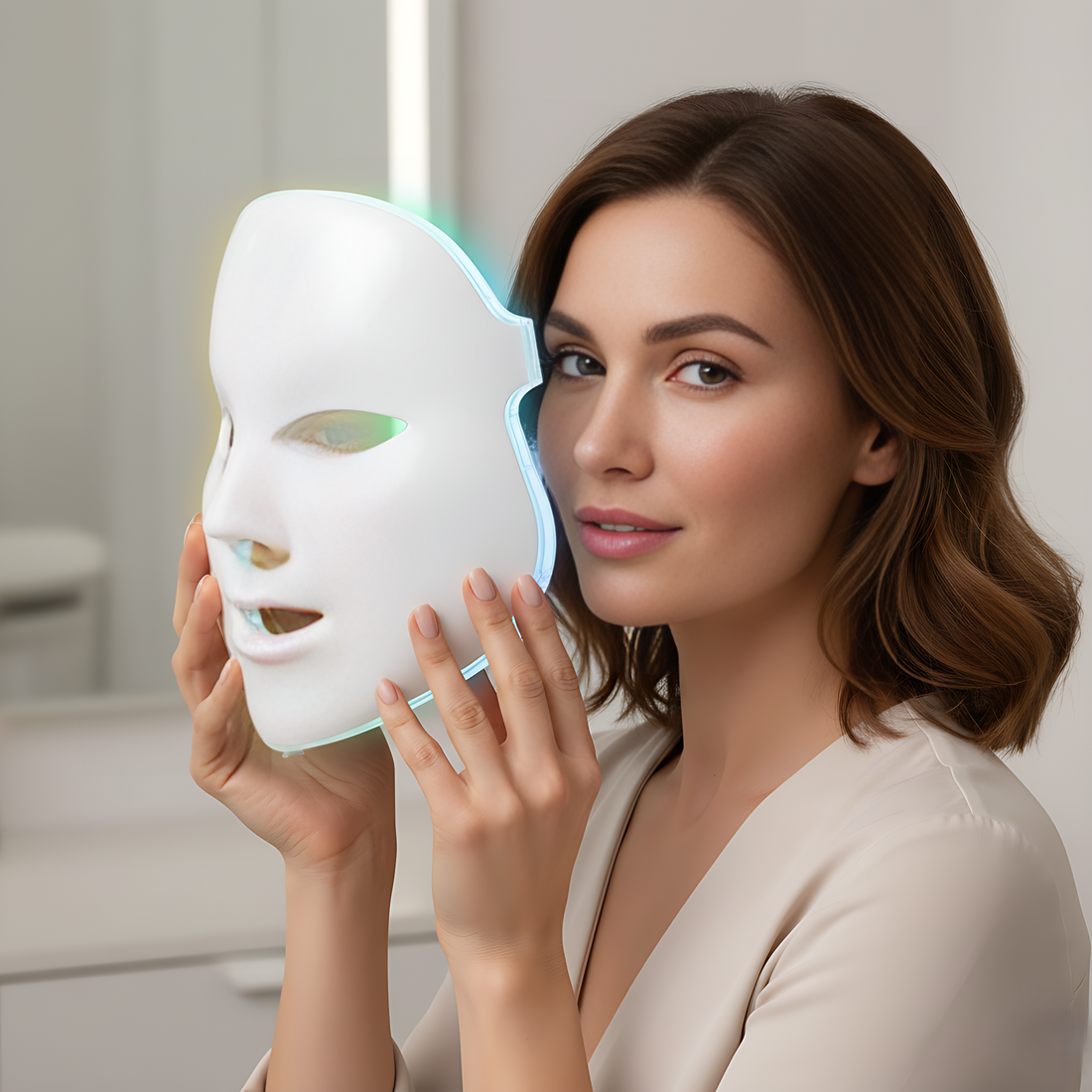
The Truth About LED Light Therapy: Myths vs. Reality
Share
Contents
-
What Are LEDs and How Do They Work?
-
Is LED Light Therapy Dangerous?
-
Can It Cause Cancer?
-
Can It Burn the Skin?
-
Is It Safe During Pregnancy?
-
Are There Risks for the Eyes?
-
What About Psoriasis, Eczema, or Rosacea?
-
Is LED Light Therapy Painful?
-
Conclusion: Understanding the Real Safety of LED Light Therapy
Reading time: about 4 minutes
Introduction
As new technologies enter the beauty industry, misunderstandings remain common — especially around LED masks.
This article aims to set the record straight, separating facts from myths, and explaining how to safely benefit from LED light therapy for your skin.
1. What Are LEDs and How Do They Work?
LEDs (Light-Emitting Diodes) emit light energy that penetrates the skin to stimulate cellular activity.
This process helps boost collagen production, reduce inflammation, and improve overall texture and tone.
Unlike UV light, LEDs work within safe, non-harmful wavelengths that do not damage skin cells.
2. Is LED Light Therapy Dangerous?
No. LED light therapy is considered safe, gentle, and non-invasive.
It emits no UV rays, which makes it very different from tanning lamps or other light sources that can harm the skin.
Clinical studies confirm its effectiveness and safety in treating acne, signs of aging, and pigmentation.
It’s a scientifically backed treatment, well tolerated by all skin types.
3. Can It Cause Cancer?
Absolutely not.
LED devices use non-ionizing wavelengths, meaning they don’t release enough energy to damage DNA or cause cellular mutations.
They are therefore completely unrelated to skin cancer, unlike prolonged UV exposure from sunlight.
4. Can It Burn the Skin?
No.
LED masks do not work like tanning beds, which use UV rays.
They operate at low energy levels, providing therapeutic benefits without generating excessive heat or causing burns.
The light penetrates deeply but remains non-thermal and gentle on the skin.
5. Is It Safe During Pregnancy?
Research on LED therapy during pregnancy is still limited.
Although the treatment is non-invasive, it’s best to consult your doctor before use if you are pregnant or breastfeeding.
6. Are There Risks for the Eyes?
LED light is safe for the skin, but it’s advisable to protect your eyes, especially when using blue light.
Extended exposure to intense light may cause temporary eye strain or discomfort.
To stay safe, use a mask with built-in eye shields or wear protective goggles during your sessions.
7. What About Psoriasis, Eczema, or Rosacea?
LED therapy can actually help soothe inflammatory skin conditions such as eczema and rosacea.
Red light has been shown to reduce redness, swelling, and itching, while promoting healing and relieving discomfort.
However, since every skin condition is different, it’s best to consult a dermatologist before starting treatment — particularly if you have open wounds.
8. Is LED Light Therapy Painful?
Not at all.
LED light therapy is completely painless and non-invasive.
Most users describe a gentle warming sensation that feels relaxing.
Recent studies even suggest a possible link between red light exposure and improved sleep quality thanks to its calming effect.
9. Conclusion: What You Should Remember
LED light therapy is a safe and effective skincare innovation, offering visible results with minimal risk.
When used properly, it provides real skin rejuvenation with no downtime and no discomfort.
To maximize results:
-
Choose a certified, high-quality device,
-
Follow the manufacturer’s instructions,
-
And consult a skincare professional if you have specific skin concerns.
In short, LED light therapy is a low-risk, at-home treatment that delivers brighter, healthier, and more radiant skin — safely and comfortably.
written by Charle Pill

